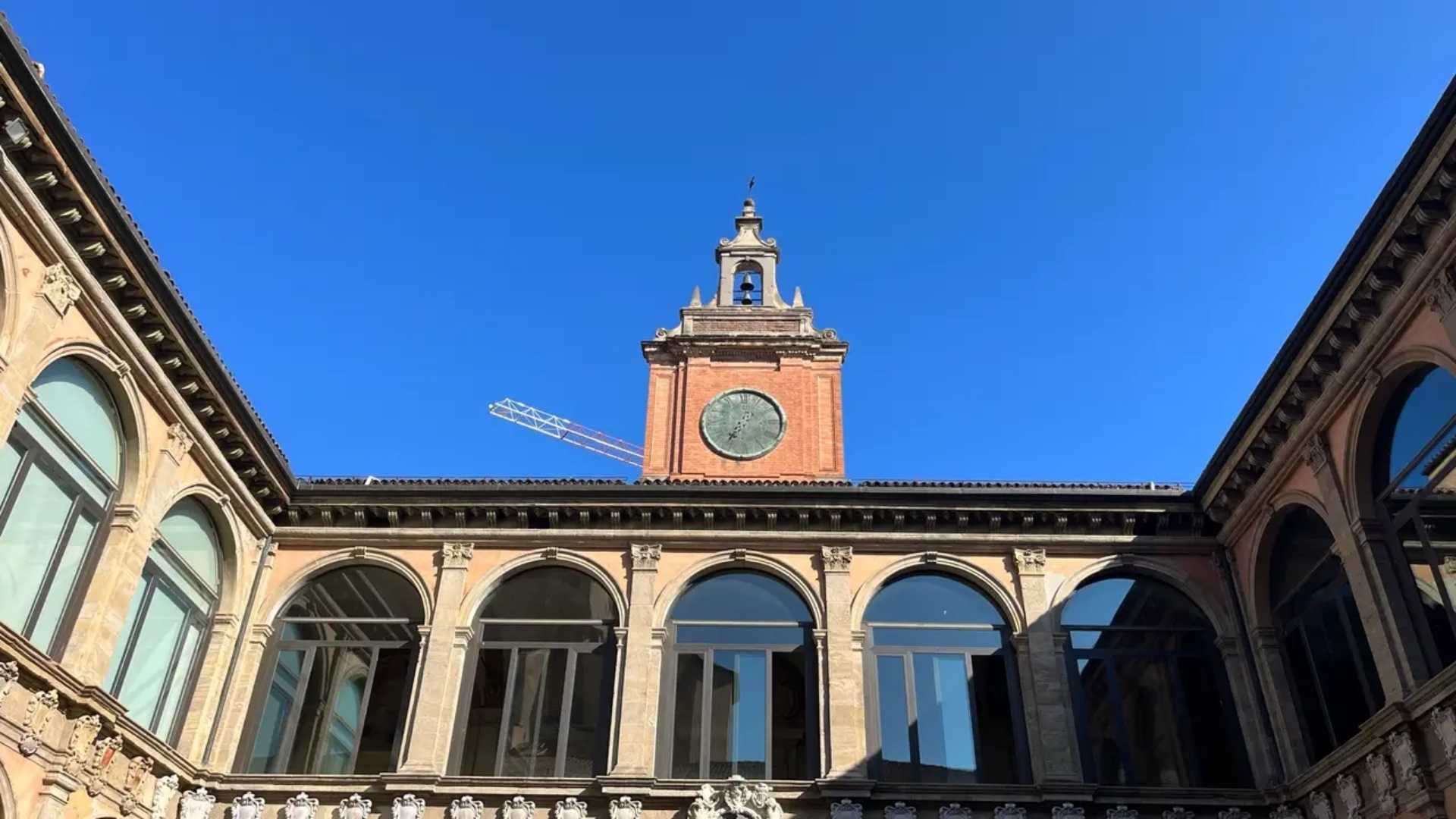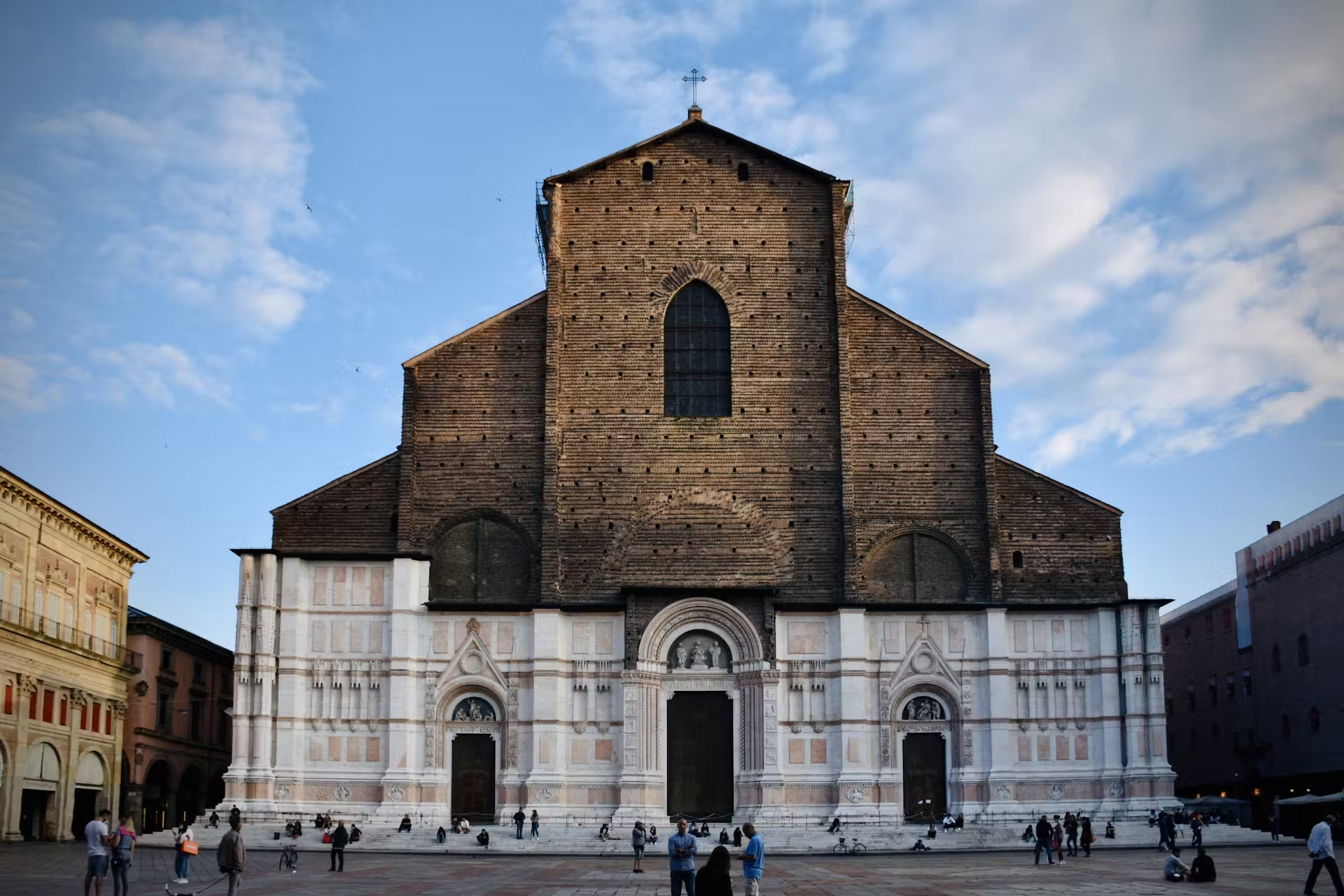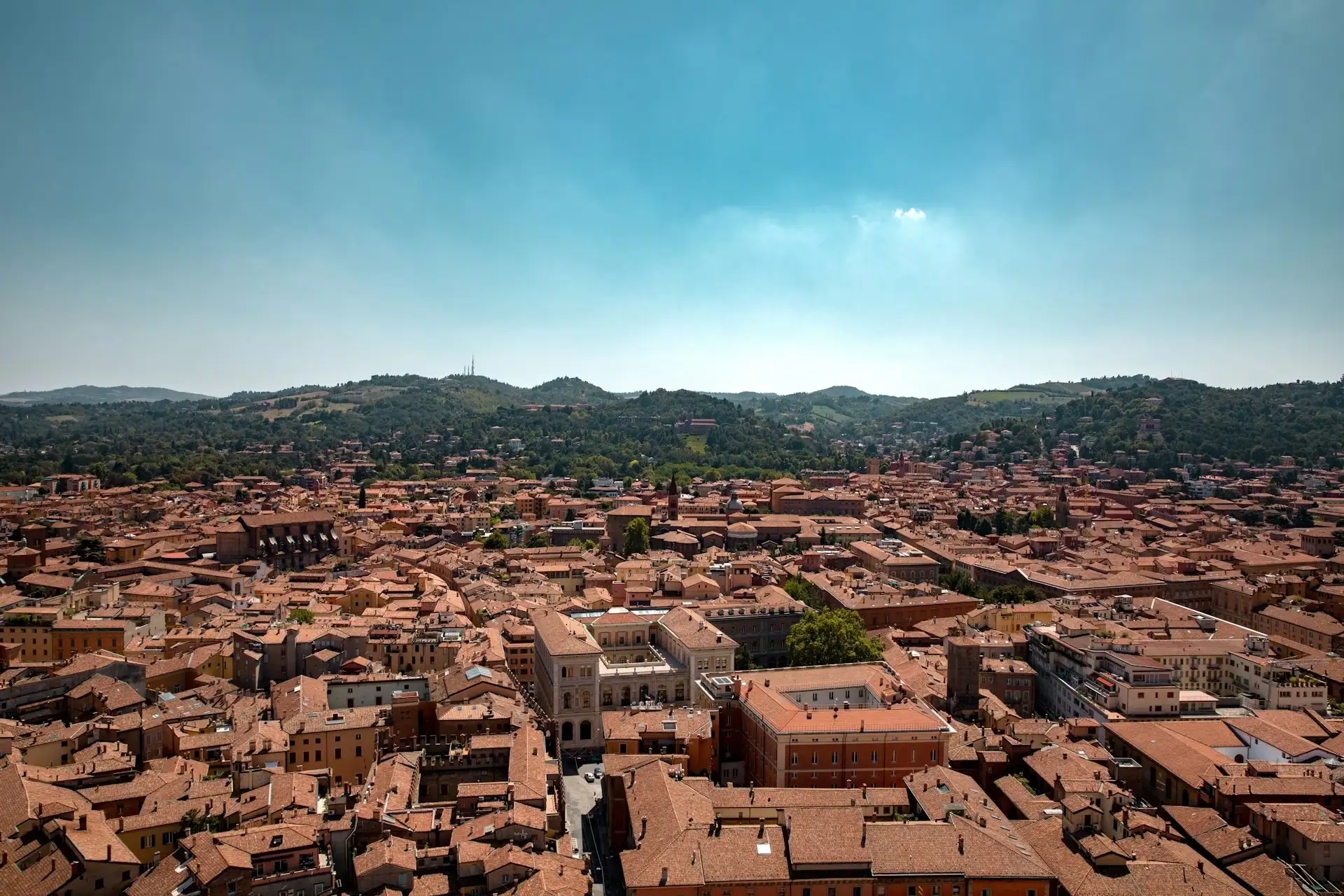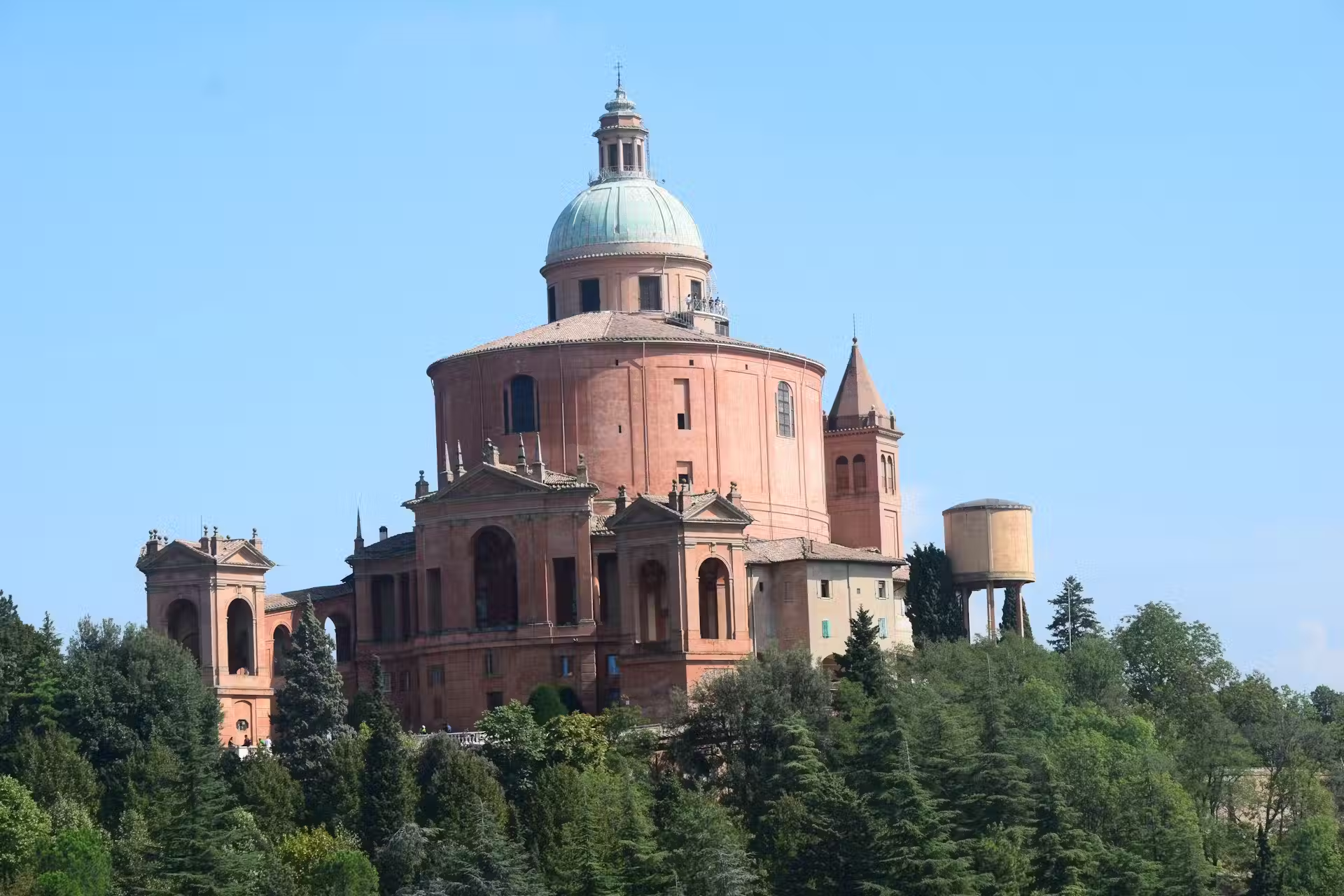TLDR: The Archiginnasio was Bologna's main university building from 1563 to 1803, now housing a historic library and the famous Teatro Anatomico (anatomy theater). The carved wooden anatomy theater is the highlight, genuinely impressive and slightly creepy. Entry costs around 3-5 euros. The library reading room is beautiful but only viewable from the entrance. Worth 30-45 minutes if you appreciate Renaissance history or medical science. Skip if you're rushed or uninterested in academic history.
Walking into the Archiginnasio's courtyard, you immediately sense you've entered someplace that took itself seriously for centuries. The walls are covered with thousands of student heraldic crests and the atmosphere feels scholarly even now.
After visiting several times, I've learned that the Teatro Anatomico is the star attraction here, while the rest of the building is interesting but less essential.
If you want deeper context about how this building fits into Bologna's identity as Europe's oldest university city, StoryHunt's Personal Tour Guide provides audio narration connecting the Archiginnasio with other academic and cultural sites throughout Bologna.
What is the story behind Archiginnasio?

Pope Pius IV commissioned the Archiginnasio in 1562 to consolidate Bologna University's scattered schools into one building, partly to assert papal control over the institution. Architect Antonio Morandi designed the palazzo, which opened in 1563.
For 240 years, this was the university's heart where medicine, law, philosophy, and other subjects were taught. The building's name comes from the Athenaeum, the ancient Roman school in Rome.
When Napoleon reorganized Italian universities in 1803, teaching moved elsewhere and the building transitioned to housing Bologna's municipal library. The thousands of heraldic crests covering the walls represent student coats of arms accumulated over centuries, creating a unique visual record of academic history.
Is the Archiginnasio still a University?
No, the Archiginnasio hasn't functioned as a university since 1803. Today it houses Bologna's main municipal library, the Biblioteca Comunale dell'Archiginnasio, with over 850,000 volumes.
The reading rooms are active, so you'll see actual researchers and students working there, but they're library users, not university students studying in the building. The ground floor courtyards and stairs are open to visitors. Upstairs, the Teatro Anatomico and Stabat Mater hall require tickets.
It's essentially a museum of university history now, preserved to show what European academic life looked like in the 16th-18th centuries. The scholarly atmosphere remains even though formal teaching doesn't happen here anymore.
What is the Teatro Anatomico?
The Teatro Anatomico is an ornate wooden anatomy theater built in 1637 where medical students watched professors dissect cadavers. The tiered seating surrounds a central marble dissection table topped by a canopy with carved figures.
Two flayed muscle statues nicknamed "the skinless ones" support the professor's chair. The entire room is carved cedar wood with elaborate decorations. It was destroyed by WWII bombing in 1944 and meticulously reconstructed using original fragments.
The theater seats about 250 people in steeply raked rows, designed so everyone could see the dissection clearly. It's simultaneously beautiful and macabre, which makes it fascinating. This is absolutely the Archiginnasio's main draw.
How long should I spend at the Archiginnasio?
Most visits take 30-45 minutes total. The courtyard exploration takes 10 minutes. The Teatro Anatomico visit is guided and lasts about 15-20 minutes depending on your guide's pace and crowd size.
The Stabat Mater hall, if open, adds another 10 minutes. I typically spend around 40 minutes here, which feels adequate. You can't linger freely in the Teatro Anatomico since it's guided visits only. The library reading room is viewable only from the doorway unless you're an actual researcher.
Unlike museums where you control your pace, the Archiginnasio experience is fairly structured. It's an efficient attraction, perfect when you want substantial content without a huge time commitment.
What is the Archiginnasio's library known for?
The library is known for its vast historical collection and the magnificent Stabat Mater hall reading room. The collection includes over 35,000 manuscripts, 2,500 incunabula (books printed before 1501), and hundreds of thousands of historical volumes.
The Stabat Mater hall features ceiling frescoes and ornate decoration that makes it one of Italy's most beautiful reading rooms. However, tourists can usually only peek in from the entrance unless attending special events. The library functions primarily as a research facility for scholars, not a tourist attraction.
Its reputation comes from its holdings and historical importance rather than public accessibility. The walls throughout display student crests creating a unique visual archive of university history.
Is photography allowed inside the Archiginnasio?
Photography is allowed in most areas without flash. The courtyards are completely fine for photos. Inside the Teatro Anatomico, photography rules vary by guide, some allow it freely, others restrict it during the explanation then permit photos afterward.
No flash anywhere since the wooden carvings are fragile and light-sensitive. The library reading room allows photos from the entrance doorway only. Tripods and professional equipment require special permission.
I've never had issues taking regular tourist photos with my phone. The carved wooden anatomy theater photographs well despite often being crowded, though getting shots without other tourists requires patience and strategic positioning.
When is the best time to visit the Archiginnasio?
Opening hours are typically 10 AM to 6 PM with lunch closure from 1-2 PM, though this varies seasonally. Arriving right at opening (10 AM) or late afternoon (4-5 PM) offers smaller crowds.
Midday gets packed with tour groups. Weekday mornings are quieter than weekends. Summer brings maximum tourist traffic. Spring and fall provide better visiting conditions with manageable crowds.
The Teatro Anatomico requires timed entry, so you might wait for the next available tour. If you're mapping out a Bologna itinerary, The Personal Tour Guide can position the Archiginnasio logically within a route connecting nearby attractions like San Petronio and Santo Stefano, helping you time visits to avoid peak congestion.
What else should you see nearby?
Bologna's historic center is remarkably concentrated, making it easy to combine multiple sites in one day. Beyond the Archiginnasio, prioritize:
- Basilica of San Petronio on Piazza Maggiore
- Piazza del Nettuno with the Neptune Fountain
- Santo Stefano complex for peaceful medieval atmosphere
- Sanctuary of San Luca if you have time and energy for the uphill walk
The Archiginnasio sits just off Piazza Maggiore, placing you at Bologna's heart. The Personal Tour Guide helps connect these attractions thematically, explaining how the university, church, and civic power interacted throughout Bologna's history rather than treating each as an isolated stop.
Is it worth seeing Archiginnasio?

Yes, especially if you're interested in medical history or Renaissance education. The Teatro Anatomico alone justifies the modest entrance fee and time investment. It's genuinely unique, something you can't see elsewhere.
The building overall provides valuable context for understanding Bologna's academic identity. However, if you're uninterested in university history or feeling rushed, you could skip it without major regret. It's not as visually spectacular as major Italian churches or palaces, but it offers something intellectually substantial. The experience is more cerebral than emotional.
I rank it as a solid second-tier Bologna attraction, worth including if you have a full day but expendable if you're doing a quick visit.
How can you explore Bologna's academic heritage?
The Archiginnasio represents just one piece of Bologna's 900-year university story. The city has student neighborhoods, historic lecture halls, and academic traditions embedded throughout its fabric.
StoryHunt's Personal Tour Guide creates customized audio walks based on your interests, whether that's history of science, Renaissance architecture, or student life through the ages. The interactive map shows connections between the Archiginnasio, other university sites, and Bologna's broader cultural landscape.
You explore at your own pace, diving deep into topics that fascinate you while skipping what doesn't, creating an experience shaped by curiosity rather than obligation.

.webp)




.jpg)




.avif)





